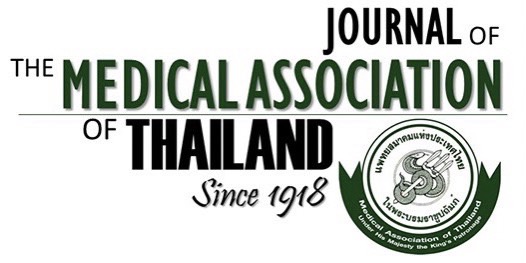Comparative Study of Postoperative Pain between Maylard Incision and Pfannenstiel Incision in Gynecologic Surgery: A Randomized Controlled Trial
Chutchai Chaywiriyangkool MD*, Sakol Manusook MD*, Densak Pongrojpaw MD*, Charintip Somprasit MD*, Kornkarn Bhamarapravatana PhD**, Komsun Suwannarurk MD*
Affiliation : * Department of Obstetrics and Gynecology, Faculty of Medicine, Thammasat University, Pathumthani, Thailand ** Department of Preclinical Science, Faculty of Medicine, Thammasat University, Pathumthani, Thailand
Background : Postoperative pain has many adverse effects for the patients with laparotomy operation. There are few studies
that compare between Maylard and Pfannenstiel incision in term of pain and wound complication after operation.
Objective : To compare the postoperative pain and wound complications between the muscle-cutting Maylard incision and the
Pfannenstiel incision in women who needed benign gynecologic surgery.
Material and Method: This randomized controlled trial study compared two laparotomy techniques, Maylard and Pfannenstiel
method. Ninety cases of benign gynecologic conditions were recruited and randomly assigned to receive either Maylard or
Pfannenstiel incision from August 2014 to October2015 at Thammasat University Hospital, Thailand. Visual analogue scale
(VAS) was applied to measure postoperative pain. Baseline characteristics of the study groups and postoperative outcomes
were analyzed.
Results : From the planned 90 recruited cases, there were 81 cases for complete analysis, 41 in Maylard and 40 in Pfannenstiel
group. There were no difference in age, body mass index, education level, previous abdominal surgery and type of operation
between Maylard and Pfannenstiel group. Duration of operation, type of anesthesia and dosage of analgesic drug were not
statistically significant between both groups. Length of surgical wound was longer in Maylard than in Pfannenstiel group
(17.27+0.6 vs. 14.13+0.8 cm, p = 0.04). Postoperative pain score (VAS) at 3, 6, 12, 24 and 48 hours were not statistically
different between two groups. Pain score at 72 hours and 7th day in Maylard group showed significantly less than in
Pfannenstiel group (0.51+0.5 vs. 1.10+1.0 p = 0.04, 0.12+0.3 vs. 0.23+0.4, p = 0.01, respectively). The numbers of
participants with moderate to severe pain (VAS >4) in Maylard group were less than in Pfannenstiel group at 3, 6, 12 and 24
hours but after that there was no statistically difference. There were no postoperative wound complications such as disruption,
infection or hematoma in all participants in this study.
Conclusion : Postoperative pain up to 48 hours in both Maylard and Pfannenstiel group showed similar VAS but after 48
hours; the Maylard group showed less pain. Even though the surgical wound length in Maylard group was longer than
Pfannenstiel group, numbers of cases with VAS >4 within 24 hours in Maylard were less than in Pfannenstiel group.
Keywords : Gynecologic surgery, Maylard incision, Pfannenstiel incision, Postoperative pain



